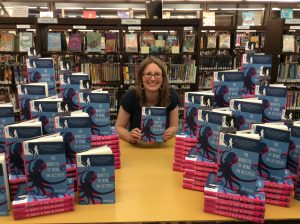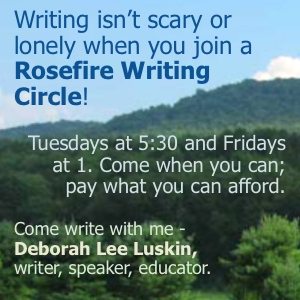Let’s Read 2019 is a community reading initiative happening this summer and fall. All members of the communities of Brattleboro, Dummerston, Guilford, Putney, and Vernon may participate. Let’s Read 2019 features The Benefits of Being an Octopus by local author Ann Braden. This book is appropriate for children in 4th grade and up, as well as adults. Several events including author talks, staged readings, and book club discussion groups will be held in September and October at local libraries, the Brattleboro Boys and Girls Club, and area schools.
Set in a fictionalized version of Brattleboro, The Benefits of Being an Octopus is the powerful story of a young girl finding her courage and voice in the face of poverty, bullying, and a challenging home life. Books available to be borrowed and returned at the school libraries in all schools in WSESU and at Brooks Memorial Library, Guilford Free Library, Lydia Taft Pratt Library, Putney Public Library, Vernon Free Library, and the Boys and Girls Club of Brattleboro.
Let’s Read 2019 is made possible thanks to generous support from the Vermont Humanities Council, the Windham Foundation, and the Brooks Memorial Library, and is sponsored by WSESU, Food Connects, and Brattleboro Area Prevention Coalition. For more information, contact Sheila Humphreys, sheila@foodconnects.org or (802) 451-0806.





Ahh, the memories.
“Let’s Read” was the name of the book that I used to learn to read. I have it nearby.
“Let’s Read – A Linguistic Approach” by Leonard Bloomfield and Clarence L. Barnhart. The dust jacket says that “reading involves nothing more than the correlation of a sound image with its corresponding visual image, that is, with the spelling.”
The first step is to be able to recognize letters, and differences between them. Then the book has students learn to look across pages left to right. It has a series of before and after pictures – someone shooting an arrow, a guy throwing a ball, a person on a sled hill – and asks what will happen next.
There are more pictures that test ability to see small differences in letter shapes. After that, we read!
If I started with the first lesson, which I’m sure I must have done, my first reading lesson was:
“can Dan fan man Nan pan ran tan an ban van
a can a fan a pan a man a van
a tan van a tan fan
Dan ran. Nan ran.
Van ran. A man ran.
Nan can fan Dan.
Can Dan fan Nan?
Dan can fan Nan.
Nan, fan Dan.
Dan, fan Nan.
Dan ran a van.
Dan ran a tan van.
A man ran a tan van.”
(This was all printed in a version of Baskerville, which would have been my first typeface.)
The next lesson used the “at” sound – bat, cat, fat, hat, mat, Nat, pat, rat, sat, at tat vat.
By lesson 10 things were more complex: “A rat sat in a big bin. Can Nan win at tag?”
By lesson 50 we see things such as “Dan sent Mom a gift from camp. At camp, Dan had a cot in a tent. Al got hit on the leg. Did Al limp? Fred must help us lift the desk. Help us, Fred! Lend us a hand.”
I’m pretty certain that I gave up on this book after a while and moved over to more grown up titles such as Dr. Seuss and Pat the Bunny.
I’m almost positive I never made it to the last page. The final lesson (#245) has this:
“When the old man got up to go, Florence went with him to the door. He looked down at her with his bright blue eyes and said, “If you should need me, I’ll come to see you again. But I don’t think it will be necessary, because you need never again feel bored and unhappy when you are alone. Now you know how to read.”